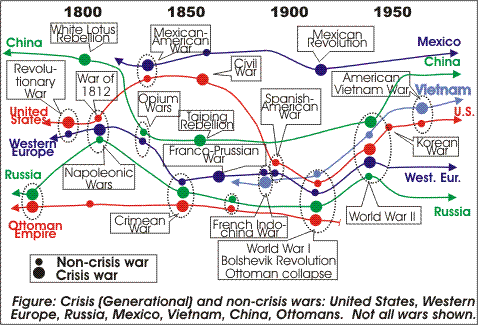Dear Matt,
Matt, please don't get involved with this. In this thread we'reOriginally Posted by MichaelEaston
always talking about things that can't be avoided - the U.N. couldn't
prevent a Darfur massacre, the World Health Organization can't
prevent a bird flu pandemic - whatever is going to happen is going to
happen irrespective of what anyone does. There's absolutely nothing
you can do that will have any effect whatsoever. Both your parents
may listen to you because they're concerned about you, or in the
worst case one will hope that you'll side with him/her against the
other. But whatever is going on has to do with issues that you don't
understand, and nothing you say or do can affect those issues, so
nothing you say or do can either cause a divorce or prevent one, just
as nothing you can do can either cause or prevent a tsunami. Just
look out for yourself and hope for the best.
That's part of it, but I don't want to lose the work you've alreadyOriginally Posted by MichaelEaston
done. You're involved in other things now, and you've put this
Indian tribe project temporarily aside, but "temporarily" has a way
in life of becoming "permanently," and what you've already done will
be lost.
You've given me two alternatives, but they aren't disjoint. Please
do both. Please give me the ones that you have now, and please give
me an updated list when you've had time to fill in the holes.
I understand that -- I understand that very well. That's why I onlyOriginally Posted by MichaelEaston
asked for the list of crisis wars and dates, which I hope you can do
very quickly and easily.
What you're seeing is a period of national insanity. When I realizedOriginally Posted by MichaelEaston
in 2002 that we were entering a new 1930s style depression, the
market was around Dow 8000, and I assumed that the market would keep
falling. That's been completely wrong, of course. I didn't realize
how aggressively the Fed would pump free money into the economy (with
zero effective interest rates), and I didn't realize how even people
like Alan Greenspan, who are supposed to know better, could simply
ignore the most obvious indicators, such as price/earnings ratios.
I would think what was going on was impossible if I hadn't studied
previous bubbles. Here's the Tulipomania bubble:
Tulips were the high-tech item of the early 1600s. Amsterdam was the
major gateway between London and Paris, and the city had benefited
hugely from having established Europe's first central bank in 1609,
giving Dutch merchants a big competitive advantage around the world.
It was still the biggest bank in Europe in the 1630s, and the whole of
the Netherlands was prosperous, not having yet been affected by the
Thirty Years War.
Tulips did not originate with the Dutch. The first bulbs had arrived
from Turkey only a few years earlier, in the late 1500s. By means of
breeding experiments, Dutch botanists were able to produce tulips
with spectacular colors. These tulips were sought by wealthy people,
and by 1624, one particularly spectacular bulb sold for the cost of a
small house.
Prices remained elevated for over another decade, and soon investors
from all over Europe began purchasing a kind of "Tulip future," a
certificate purchased in the fall which can be traded for a specific
actual tulip to be grown the following spring. In some ways, these
certificates were similar to "stock options" in the 1990s.
In 1636, speculation in tulip futures went through the roof, and on
February 3, 1637, the tulip market suddenly crashed, causing the
loss of enormous sums of money, even by ordinary people, including
many ordinary people in France and other countries.
A mood of retribution began immediately, and even the tulips
themselves suffered. Evrard Forstius, a professor of botany, became
so reviled by the mere sight of tulips that he attacked them with
sticks whenever he saw them! At this point, the Thirty Years War
enveloped all of Europe.
What's going on today is no more surprising than what went on in
1636, and it's just as insane.
Sincerely,
John
John J. Xenakis
E-mail: john@GenerationalDynamics.com
Web site: http://www.GenerationalDynamics.com
- Join Date
- May 2003
- Location
- Cambridge, MA
- Posts
- 4,010













